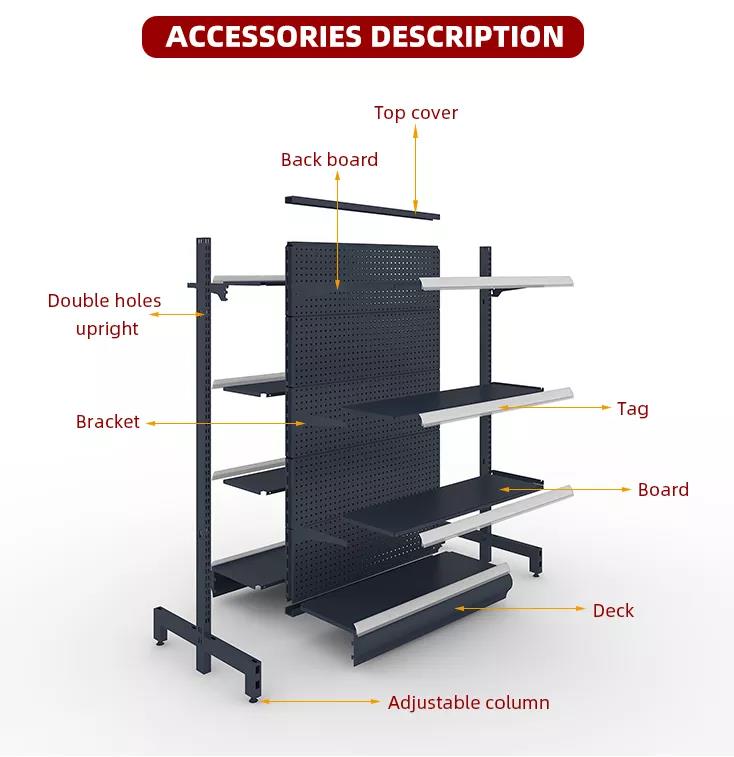A typical supermarket shelf consists of several parts designed to support and display products effectively. Here are the common parts of a supermarket shelf:
1. Uprights: Uprights are vertical metal or plastic columns that form the main framework of the shelf. They are typically placed at regular intervals along the length of the shelf and provide stability and support for the shelves and other components.
2. Shelves: Shelves are horizontal platforms where products are placed for display. They are usually made of durable materials such as metal, wood, or plastic. Shelves can be adjustable in height to accommodate different product sizes and can be tilted or slanted to enhance product visibility. Multiple shelves are placed one above the other to maximize vertical space utilization.
3. Back Panels: Back panels are vertical panels attached to the rear of the shelf. They provide stability to the shelf and prevent products from falling off the back. Back panels are often perforated to allow for airflow and to attach accessories like hooks or pegs for hanging merchandise.
4. Base or Base Deck: The base or base deck is the lower part of the shelf that provides support and stability. It is typically a solid or perforated panel attached to the bottom of the shelving unit. The base deck may have wheels or casters for easy mobility in some cases.
5. Fencing or Dividers: Fencing or dividers are vertical partitions attached to the front of the shelf to separate and organize products. They help maintain neat and organized product displays and prevent items from mixing or falling over. Fencing can be adjustable to accommodate different product sizes and shapes.
6. Signage and Label Holders: Signage and label holders are attached to the front of the shelving unit to display product information, pricing, promotions, or branding. These components help customers identify products, compare prices, and make informed purchasing decisions.
7. Accessories: Various accessories can be added to supermarket shelves to enhance product display and organization. These include hooks, pegs, baskets, trays, or bins that can be attached to the shelves or back panels. Accessories provide flexibility in presenting different types of merchandise and allow for easy rearrangement or customization of the display.
8.Brackets: Brackets are the components that connect the shelves to the uprights. They are typically made of metal and are responsible for providing support and stability to the shelves. Brackets come in various styles and designs, such as shelf brackets or slot brackets, and they are designed to securely hold the shelves in place while allowing for height adjustability if needed. The number and placement of brackets on each shelf depend on the weight-bearing capacity required for the products being displayed. Brackets are an integral part of the shelving system, as they ensure that the shelves can hold the weight of the products without sagging or collapsing.
It’s important to note that the specific design and components of supermarket shelves may vary based on the store’s layout, the types of products being displayed, and the retailer’s preferences. However, the above-mentioned parts are commonly found in most supermarket shelving systems.




